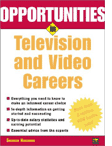Reviews:
Reporter World provides a variety of safety equipment, identification products, specialized high-visibility clothing, pertinent news, product reviews, book reviews and useful links specifically for reporters, writers, assignment editors, news correspondents, journalists, ENG crews, photographers, production staff, directors, segment producers, media security personnel, and freelancers: in short, anyone who is part of the news gathering, information reporting, or documentary film industries.
In this section we review various products and services of relevance to reporters, writers, correspondents, ENG teams and production staff. These products include cameras and accessories; computer hardware and software; scanners; printers; books and other products. Smaller, mini-reviews, are also available in other sections of this site including Products, Books and Movies.
We are constantly adding additional reviews to this section. If you have any suggestions for other products you would like us to review, simply e-mail us using the feedback address on our Terms of Service page. Please supply us with as much information as you can about the product (including name, manufacturer, model number) or book (including title, author, ISBN and publisher).
 Title: Opportunities in Television and Video Careers Title: Opportunities in Television and Video Careers
Author: Shonan Noronha
Copyright: © 2003
Publisher: VGM Career Books, a division of McGraw-Hill
ISBN: 0-07-140603-4
Relevance: Any reporter, TV writer, ENG crew, P/A or other member of the production staff in the TV or video industries will benefit from the up-to-date information within Opportunities in Television and Video Careers. The book contains valuable ideas for finding the "right" academic programs, internships, and professional organizations as well as expert advice on how to hone your existing professional skills for the video and TV jobs that most interest you.
Review: Part of VGM Career series, Opportunities in Television and Video Careers provides a huge amount of up-to-date information about jobs and careers within these two fast-paced job markets. The book is ideal for any student considering a career in TV or video as well as those professionals looking at moving up the corporate ladder or that next Big Challenge.
Author Shonan Noronha first presents an overall view of the television landscape in which she outlines the new career paths involved with this industry. According to the book, there are at least four basic paths to explore in this brave new world of digital media: content, creative, technical, and management.
Content, of course, is that which is presented to the TV viewer or video watcher and involves professionals such as reporters, writers, editors, directors, and of course, producers. Creative people typically find jobs in the television and video industries as camera operators, editors, computer graphic artists and animation artists.
While every job in Noronha's world of broadcasting has a technical element, some jobs in TV and video are purely technical. Managers, of course, run both the operational and business sides of the TV and video business and Noronha outlines what the present and future holds for these people as well.
Unlike many others we've seen writing about our industry, Noronha's book has been fully revised and has been brought up to date for its 2003 printing. Digital video, directing in the digital world, non-linear editing, computer graphics and animation, Internet video, music video, music television, DTV and HDTV, DVD, and other optical media are all outlined.
Broadcasting overview
After spending a few paragraphs to historically frame what broadcast used to be, Noronha launches into a series of small essays concerning the future of the medium. Although basic, sections on satellite technology, the role of the FCC, LPTV stations, translator stations, and, of course, the commercial broadcasters are all covered. In some cases, Noronha helpfully includes financial and other aggregate data for periods as recent as 2002 and 2003.
Non-commercial broadcasters such as The Corporation for Public Broadcasting (CPB), PBS, and ITVS, as well as public access cable TV are overviewed. Throughout the book, Noronha aims to organize the vastness of the television and video industries into small, bite-size chunks of information for neophytes considering a career in the industry, as well as professionals aiming to round out or otherwise supplement their industry knowledge.
One of the interesting aspects about Opportunities in Television and Video Careers is the use of television and video in non-broadcast organizations. Noronha lists a series of industries that use video, but yet are not broadcasters per se, nor would the average TV or video professional necessarily think of these organizations when expanding his or her career options. Corporate video departments, business television, video conferencing, legal videos, the government's use of videos are some examples she covers.
In Programming and Production, Noronha outlines the job titles and responsibilities for traditional news gatherers such as news director, news writer, reporter, anchor, sportscaster, and meteorologist. She also spends some time talking about the unions and other professional guild organizations involved with our industry. Production jobs such as production manager, producer, executive producer, director, unit manager, PA, lighting director, graphic artist, and others are all explained and nicely, specific examples are given for each role. As with her earlier section aimed at television news, unions, guilds and associations for production staff are also outlined.
Engineering and Technical Services is next. Here readers learn about the job titles of chief engineer, engineering supervisor, maintenance engineer, transmitter engineer, technical director (TD), master control engineer and others -- and what each does on a day-to-day basis.
Sales and marketing
Noronha recounts the oft-heard anecdote "if all you want for dinner is pizza, go do production; if you'd like spaghetti and meat sauce, then get into service; but if you'd like to afford a gourmet meal, sales is your best bet". Joking aside, sales and marketing jobs are perhaps the most lucrative in the TV industry (save, of course, for the few extremely highly paid news anchors we all know quite well). Noronha correctly points out that sales jobs can also be a stepping stone to serious and far more lucrative positions in marketing management and general management.
As with the sections outlining programming and production, and engineering and technical services, the section on sales and marketing outlines a series of jobs and their qualifications and expectations. Because the roles of sales and marketing professionals in Broadcast differ from those in Cable, she makes the appropriate distinction in her book.
One of the more interesting chapters -- and certainly one of the must-read sections in the book -- concerns working conditions and employee compensation within the television and video industries. Although subject to wide variations, Noronha's book sports a nifty table outlining average salaries, bonuses, and median salaries for a host of different jobs from general manager all the way down (at least financially speaking) to traffic manager.
She also has reprinted information from a 2001 NAB/BCFM Television Employee Compensation and Fringe Benefits Report. Here we learn the number of full-time employees and support staff for each category within a given station. Readers, therefore, can see that the "average" station has four technical directors with an average seniority of eight years and an annual salary of $30,577 (all amounts are in USD). Weekday sportscasters, of which there are typically one at an average station, have also been employed on average eight years at the station. Their average salary, however, is considerably higher at $65,779.
Interestingly, and perhaps crushingly, for those of us who roll their eyes when the weather bunny struts her (or his) stuff on air, the NAB/BCFM Report found that the average weekday weather caster earned $70,561. This type of concrete salary information is hugely beneficial to those at the beginning of their television career, or for those perhaps consider a change mid-game.
Education resources are also briefly covered for those aspiring to a career in TV or video. As well, many Web sites concerned with acquiring the necessary skills and in-depth knowledge to keep current in these fast-paced times are also included. Professional development avenues such as conferences, film and video festivals, awards, and major trade shows such as the annual NAB show, the Audio Engineering show, ICIA, Macworld, NATPE, PCxpo, RTNDA, SIGGRAPH, ShowBiz Expo, and the Society of Motion and Television Engineers (SMTE) are outlined.
Jobs in the industries
Although one might think a book entitled "Opportunities in Television and Video Careers" would be chock-full of specific information about finding a job within our industry, it takes Noronha until Chapter 10 to outline some crucial tips involved with finding a job in the industry. This may seem at first to be somewhat derelict. Upon reflection, however, we can see the correctness of this approach: by learning first about the opportunities (the majority of the book), then about the specific job search, readers can establish what path they wish to pursue, then learn the specifics on how to achieve their goals.
The book has an extensive chapter concerning women and minorities within the television and video industry. Although this reflects the author's bias, it is clearly an advantageous section for those who fall within these key demos. A short appendix of selected directories and periodicals, as well as a formal listing of professional associations and societies round out the book.
Overall: Opportunities in Television and Video Careers is a good read and an excellent reference book to consult. Considering the amount of information packed into such a compact book, we were surprised by the lack of an index, making it somewhat difficult to use the book as an occasional reference (as opposed to a straight read-through book).
Another small criticism we would have is the complete American-centric view of the book with respect to jobs and careers within the television and video industry. Although Noronha makes brief mention of career opportunities within Canada, she does not mention many specifics on how to pursue these opportunities, nor what advantages there might be in "going north". Considering this age of globalization, accompanied by the ever-shrinking virtual distance between broadcaster and viewer, between advertiser and consumer, and actor and reality show contestant, this perspective is somewhat puzzling.
These small objections aside, Opportunities in Television and Video Careers is an excellent book to get a read on the career space of the TV and video industry. Not only do readers learn where the industry is going, but, reading between the lines, the book also provides solid hints on how to stay slightly ahead of it. Recommended for those in the industry, students considering a career within the TV or video industry, or those interested in learning the magic behind the scenes.
End of Review
Have your say.
You can give us your feedback by visiting our Terms of Service page.
Buy this book.
If you wish to buy this book right now, please click here.
Read other reviews.
If you wish to return to the Reviews page, please click here.
|
|
|





